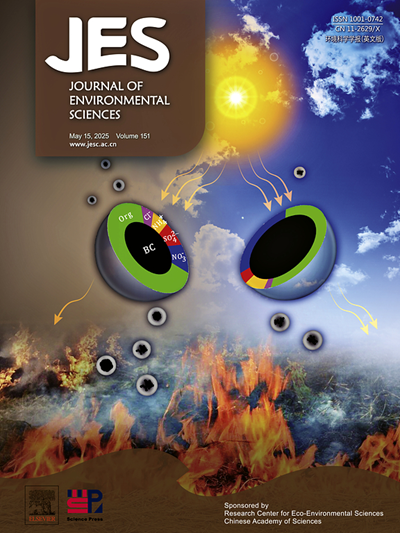Probiotic Lactobacillus rhamnosus alleviates microcystin-LR induced visual system defects and dysfunction in zebrafish by modulating apoptosis, retinal inflammation, and phototransduction
IF 5.9
2区 环境科学与生态学
Q1 ENVIRONMENTAL SCIENCES
引用次数: 0
Abstract
Microcystin-LR (MC-LR) is a highly toxic category of biotoxins that can damage eye development and retinal structure in zebrafish, while probiotics can largely benefit the function of the retina. Although they both act on the visual system, whether probiotics can alleviate the visual damage caused by MC-LR in fish and the underlying mechanisms remains unclear. In this study, we exposed adult zebrafish for 28 days at MC-LR concentrations of 0, 2.20, and 22.00 µg/L with or without the probiotic Lactobacillus rhamnosus in the diet. MC-LR exposure alone resulted in structural damage to the retina and abnormal phototropic behavior, whereas L. rhamnosus could alleviate these damages. Biochemical analyses showed that MC-LR-induced abnormalities in apoptosis of ocular cells, retinal inflammatory responses, neurotransmission, and phototransduction were restored in the L. rhamnosus treatment group, indicating L. rhamnosus alleviated MC-LR-induced defects in the visual system and dysfunctions. This study underlines the defensive role of probiotics in protecting the host from environmental pollutants, which may provide guidance for the application of probiotics in aquaculture.
益生菌鼠李糖乳杆菌通过调节细胞凋亡、视网膜炎症和光转导,减轻微囊藻毒素lr诱导的斑马鱼视觉系统缺陷和功能障碍
微囊藻毒素(microcytin - lr, MC-LR)是一种高毒性的生物毒素,会损害斑马鱼的眼睛发育和视网膜结构,而益生菌则对视网膜功能有很大的益处。虽然它们都作用于视觉系统,但益生菌是否能减轻MC-LR对鱼类造成的视觉损伤及其机制尚不清楚。在这项研究中,我们将成年斑马鱼暴露在MC-LR浓度为0、2.20和22.00µg/L的环境中28天,并在饮食中添加或不添加鼠李糖乳杆菌。单独暴露于MC-LR会导致视网膜的结构损伤和异常的趋光行为,而鼠李糖可以减轻这些损伤。生化分析显示,鼠李糖治疗组mc - lr诱导的眼细胞凋亡、视网膜炎症反应、神经传递和光转导的异常恢复,表明鼠李糖减轻了mc - lr诱导的视觉系统缺陷和功能障碍。本研究强调了益生菌在保护宿主免受环境污染物侵害中的防御作用,可为益生菌在水产养殖中的应用提供指导。
本文章由计算机程序翻译,如有差异,请以英文原文为准。
求助全文
约1分钟内获得全文
求助全文
来源期刊

Journal of Environmental Sciences-china
环境科学-环境科学
CiteScore
13.70
自引率
0.00%
发文量
6354
审稿时长
2.6 months
期刊介绍:
The Journal of Environmental Sciences is an international journal started in 1989. The journal is devoted to publish original, peer-reviewed research papers on main aspects of environmental sciences, such as environmental chemistry, environmental biology, ecology, geosciences and environmental physics. Appropriate subjects include basic and applied research on atmospheric, terrestrial and aquatic environments, pollution control and abatement technology, conservation of natural resources, environmental health and toxicology. Announcements of international environmental science meetings and other recent information are also included.
 求助内容:
求助内容: 应助结果提醒方式:
应助结果提醒方式:


